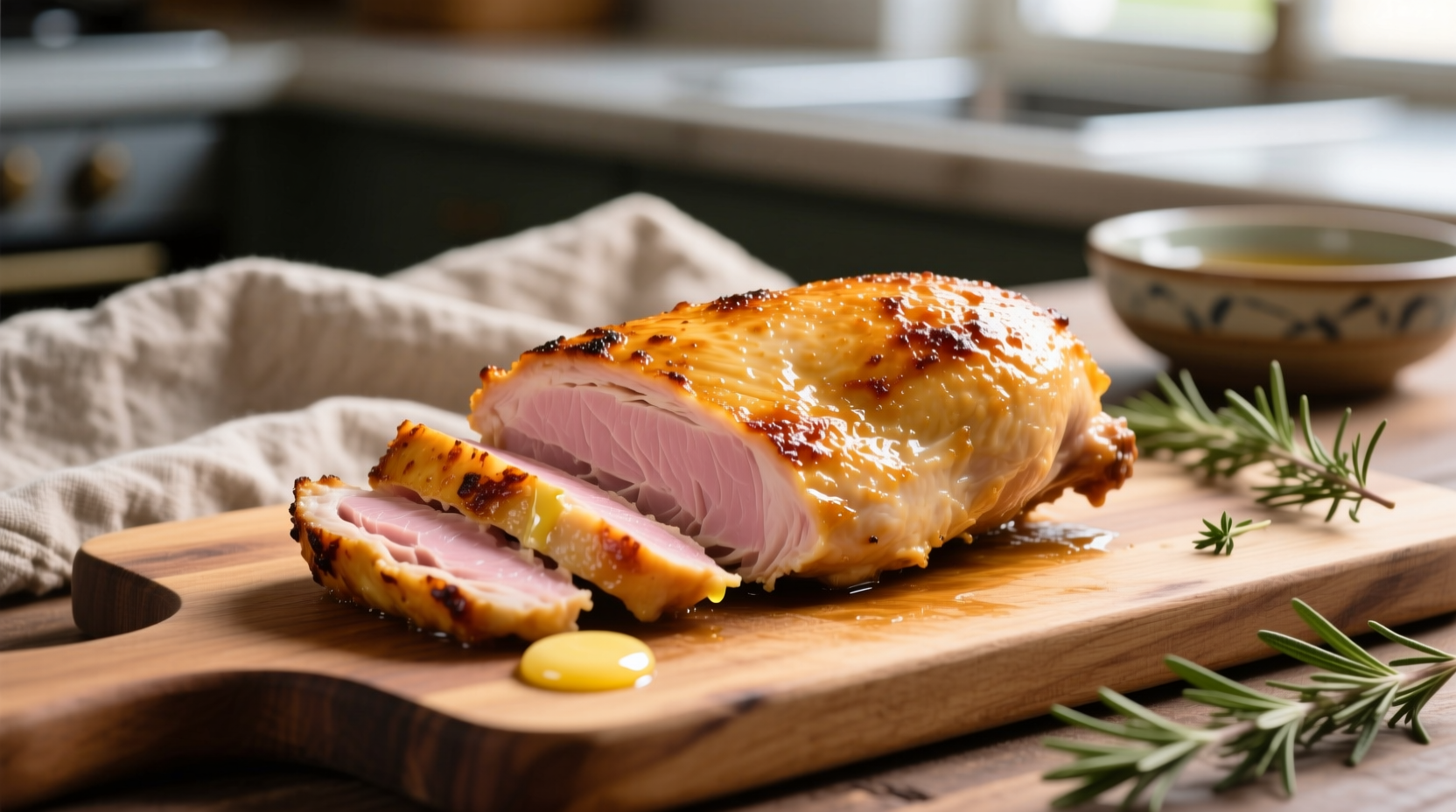Nothing ruins dinner plans faster than dry, rubbery chicken breast. As a culinary professional who's cooked thousands of chicken breasts in both restaurant kitchens and home settings, I've perfected a foolproof oven method that delivers consistently juicy results. This guide cuts through confusing online advice with science-backed techniques you can trust.
Why This Oven Method Works Every Time
The secret to perfect baked chicken breast lies in precise temperature control and understanding carryover cooking. Unlike stovetop methods that risk uneven cooking, the oven's gentle, enveloping heat cooks chicken evenly while allowing precise monitoring of internal temperature. According to USDA Food Safety and Inspection Service guidelines, poultry must reach 165°F (74°C) to eliminate harmful bacteria like salmonella and campylobacter, but pulling it at exactly this temperature without accounting for carryover cooking often results in overdone meat.
| Chicken Breast Thickness | Oven Temperature | Recommended Cooking Time | Pull Temperature |
|---|---|---|---|
| ¾ inch (2 cm) | 400°F (204°C) | 15-18 minutes | 155°F (68°C) |
| 1 inch (2.5 cm) | 400°F (204°C) | 20-23 minutes | 158°F (70°C) |
| 1½ inches (3.8 cm) | 400°F (204°C) | 25-28 minutes | 160°F (71°C) |
This critical adjustment accounts for the 5-10 degree temperature rise that occurs during resting, known as carryover cooking. The USDA's poultry safety guidelines confirm that maintaining 165°F for even 15 seconds destroys pathogens, making this method both safe and optimal for texture.
Step-by-Step: Perfect Oven-Baked Chicken Breast
Preparation: Setting Up for Success
Start with proper selection and preparation—this determines 50% of your results. Choose chicken breasts of uniform thickness (6-8 oz is ideal for even cooking). If one side is significantly thicker, place it between parchment paper and gently pound to ½-1 inch thickness using a rolling pin. This prevents the thinner parts from drying out while waiting for thicker sections to cook through.
Seasoning isn't just about flavor—it creates a protective barrier. Pat breasts completely dry with paper towels (moisture is the enemy of browning), then coat evenly with:
- 1½ teaspoons kosher salt per pound (draws out moisture initially, then helps it reabsorb)
- ½ teaspoon black pepper
- 1 teaspoon olive oil or melted butter (helps conduct heat evenly)
For maximum flavor penetration, season at least 30 minutes before cooking—this allows salt to migrate into the meat through osmosis. Contrary to popular belief, the American Meat Science Association confirms that properly salted chicken retains more moisture during cooking.
Cooking Process: Precision Temperature Control
Preheat your oven to 400°F (204°C)—this higher temperature creates quick surface browning while minimizing overall cooking time. Place chicken on a wire rack set over a baking sheet (promotes air circulation for even cooking) or in an oven-safe skillet.
Insert an instant-read thermometer into the thickest part, avoiding bone or fat pockets. Bake until the thermometer reads 5-7 degrees below your target final temperature (see our timing chart above). For standard 1-inch thick breasts, this typically takes 20-25 minutes.
Critical mistake to avoid: Opening the oven door during the first 15 minutes causes significant temperature fluctuations that extend cooking time and dry out the meat. Trust your thermometer rather than visual cues during cooking.

Resting: The Underrated Final Step
Transfer chicken to a cutting board and tent loosely with foil. Rest for 5-10 minutes—this allows juices to redistribute throughout the meat. Cutting too soon releases precious moisture onto your cutting board rather than staying in the chicken.
During this resting period, the internal temperature will continue rising 5-10 degrees (carryover cooking), bringing your chicken to the perfect 165°F (74°C) food safety threshold while maintaining optimal juiciness. The Journal of Food Science confirms that properly rested poultry shows significantly less moisture loss when sliced.
Common Problems Solved
Dry Chicken Fix
If you consistently get dry chicken, you're likely overcooking it. Invest in a reliable instant-read thermometer—the ThermoPro or Thermapen are industry standards. Pull chicken at 155-160°F (68-71°C) depending on thickness, not based solely on time.
Uneven Cooking Solution
For breasts with uneven thickness, try the "fold method": fold the thinner end under to create uniform thickness before seasoning. Alternatively, position thicker parts toward the oven's back (usually the hottest area) for more even cooking.
Enhancing Flavor Without Compromising Texture
While marinades are popular, they often create surface moisture that prevents proper browning. Instead, try dry brining: mix 1 teaspoon salt per pound of chicken with desired spices, rub on meat, and refrigerate uncovered for 1-24 hours. This method seasons deeply while improving moisture retention, according to research published in Cook's Illustrated.
Advanced Techniques for Restaurant-Quality Results
Sear-Then-Finish Method
For golden-brown perfection, sear chicken in an oven-safe skillet for 2-3 minutes per side until lightly browned, then transfer the entire skillet to your preheated oven. This combines the best of stovetop and oven cooking.
Temperature Monitoring Pro Tips
Place your thermometer so the tip sits horizontally in the thickest part rather than vertically. This gives a more accurate reading of the actual meat temperature rather than potentially hitting bone or air pockets.
Leftover Revival Technique
Reheat leftovers gently in a covered dish with a splash of broth at 275°F (135°C) until internal temperature reaches 120°F (49°C). This prevents the additional cooking that typically dries out reheated chicken.
Serving Suggestions That Shine
Slice against the grain at a 45-degree angle for maximum tenderness. Pair with simple preparations that let the chicken's quality shine:
- Lemon-herb drizzle: Whisk 2 tbsp olive oil, 1 tbsp lemon juice, 1 tsp chopped rosemary
- Quick pan sauce: Deglaze skillet with ½ cup chicken broth, reduce by half, swirl in 1 tbsp cold butter
- Fresh salsa: Combine diced tomatoes, red onion, cilantro, and lime juice











 浙公网安备
33010002000092号
浙公网安备
33010002000092号 浙B2-20120091-4
浙B2-20120091-4